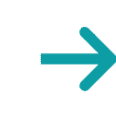B2B Networking: 10 Expert Tips for Productive Event Attendance

By Sarah Taylor, Yo Marketing Agency Head of Global Events
Attending events can be a game-changer for B2B companies—especially when it comes to B2B networking—but only if approached strategically. With the right mindset and preparation, you can generate leads, forge strategic partnerships, and create lasting business opportunities. Here’s how to make the most of every event you attend.
1. Set Clear Goals
Why are you attending this event? Are you looking to generate leads, build industry connections, or gain insights from key players in your sector? Setting clear and measurable goals will keep you focused and ensure that your time is well spent. For B2B companies, this could mean aiming to connect with a set number of decision-makers or identifying potential partners. According to Contactzilla, firms with a planned approach to networking reported 38% higher networking performance compared to those with an ad-hoc approach.
Pro Tip: Write your goals down before the event and review them as you go. Use a simple checklist to track your progress.
2. Do Your Homework
Preparation is key. Research the event agenda, identify key attendees or speakers, and follow the event hashtag on social media. Leveraging AI personalization can further enhance your strategy by integrating attendee insights to maximize your networking potential. This approach provides valuable insights into who you might meet and what topics will be most relevant to your goals. For B2B companies, tools like LinkedIn Sales Navigator or HubSpot can help you identify decision-makers, while Eventbrite and Meetup offer detailed attendee profiles. Using these tools ensures you target the right opportunities and maximize your B2B networking potential.
Example:
Before attending a tech conference, identify CEOs or industry leaders who’ll be present and prepare a few talking points about their work.
3. Perfect Your Elevator Pitch
Craft a concise introduction that clearly explains who you are, what your company offers, and the unique value you bring to potential partners or clients. Highlight your expertise and how your solutions address common challenges in your industry. For representatives of B2B companies, focus on how your services or products stand out in the market and what makes your approach distinct. Keep it under 30 seconds, and adjust it based on the attendees you’re meeting to emphasize shared goals or interests.
Pro Tip: Practice your pitch with a friend or colleague and tweak it to sound natural.
4. Pack Smart
Don’t leave essentials behind! Bring business cards, a notebook for jotting down key takeaways, and a fully charged phone. Use LinkedIn’s QR code feature to connect with attendees instantly. If the event offers an app, download it to access the agenda and network with others.
5. Be Strategic with Your Time
Don’t just wander—plan your schedule to focus on high-value sessions and networking opportunities. Arrive early to grab a good seat and meet other attendees before the program begins. During breaks, prioritize connecting with speakers or panelists.
Example:
Attend smaller breakout sessions where it’s easier to engage in discussions and meet like-minded professionals.
6. Start Conversations with Confidence
Approach networking as relationship-building, not selling. Begin with open-ended questions like, “What inspired you to attend this event?” or “What are you hoping to learn today?” Active listening and genuine interest go a long way in building rapport.
7. Take Detailed Notes
Don’t rely on memory alone. After meeting someone, jot down key details about your conversation, such as shared interests or potential follow-up topics. This will make your follow-up communications more personalized and impactful.
8. Follow Up Promptly
The real magic happens after the event. For B2B companies, follow-ups are critical to fostering lasting partnerships or even securing contracts that drive growth. Send a personalized LinkedIn request or email within 48 hours, referencing your conversation. To stand out, offer value—such as sharing a relevant resource, suggesting a collaboration, or proposing a meeting to discuss how your businesses can complement each other.
Example: “It was great meeting you at [event]. I really enjoyed our chat about [topic]. Here’s the article I mentioned; let me know what you think!”
9. Reflect and Improve
Take time to evaluate your experience. Did you meet your goals? What worked well, and what could you improve? Use these insights to refine your approach for future events.
Pro Tip: Keep a networking journal to track connections and lessons learned from each event.
10. Maintain Connections
Building relationships doesn’t end at the event. Stay in touch by engaging with your connections on LinkedIn, sharing relevant updates, or reaching out periodically. Leveraging a personalized drip campaign in your follow-ups can create a deeper, more lasting impact by delivering tailored messages over time. Consistent communication, supported by thoughtful personalization, helps nurture professional relationships and keeps your brand top of mind.
Final Thoughts
By being intentional and prepared, you can turn event attendance into a powerful networking opportunity. Keep your goals in focus, use tools like AI to enhance your preparation, and always follow up with authenticity. Networking isn’t just about growing your contact list—it’s about creating meaningful, lasting relationships.
Ready to transform your B2B networking strategy and make every event count? Contact Yo Marketing today for a free consultation!















